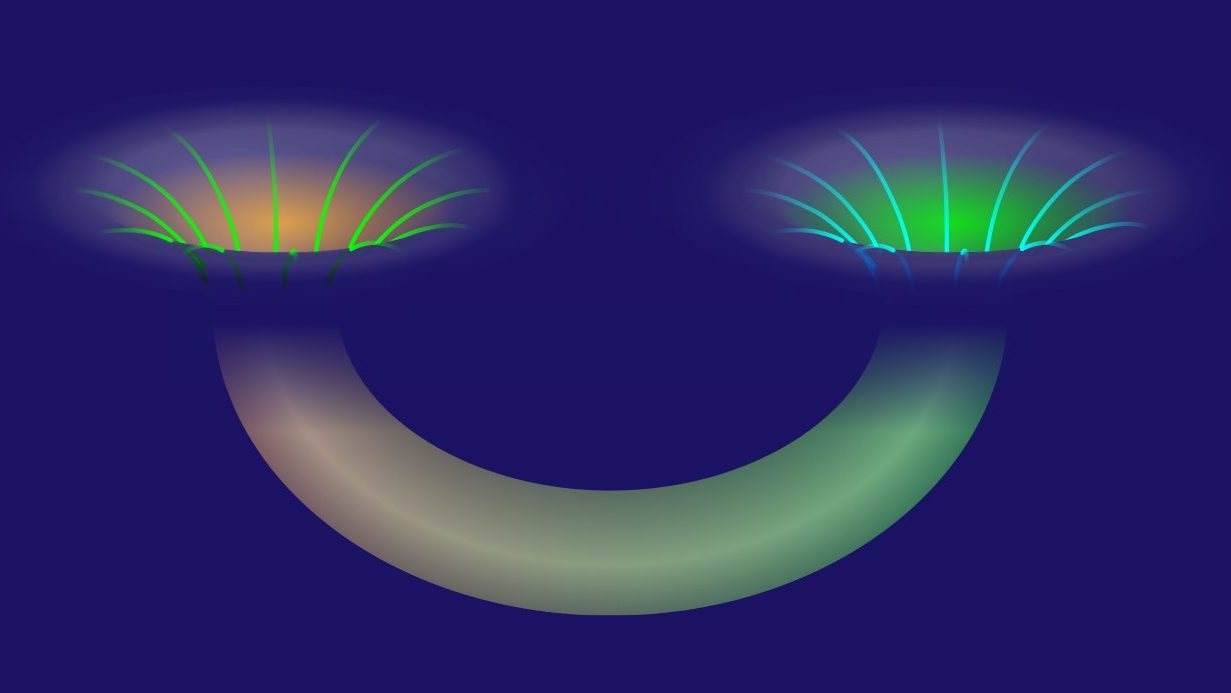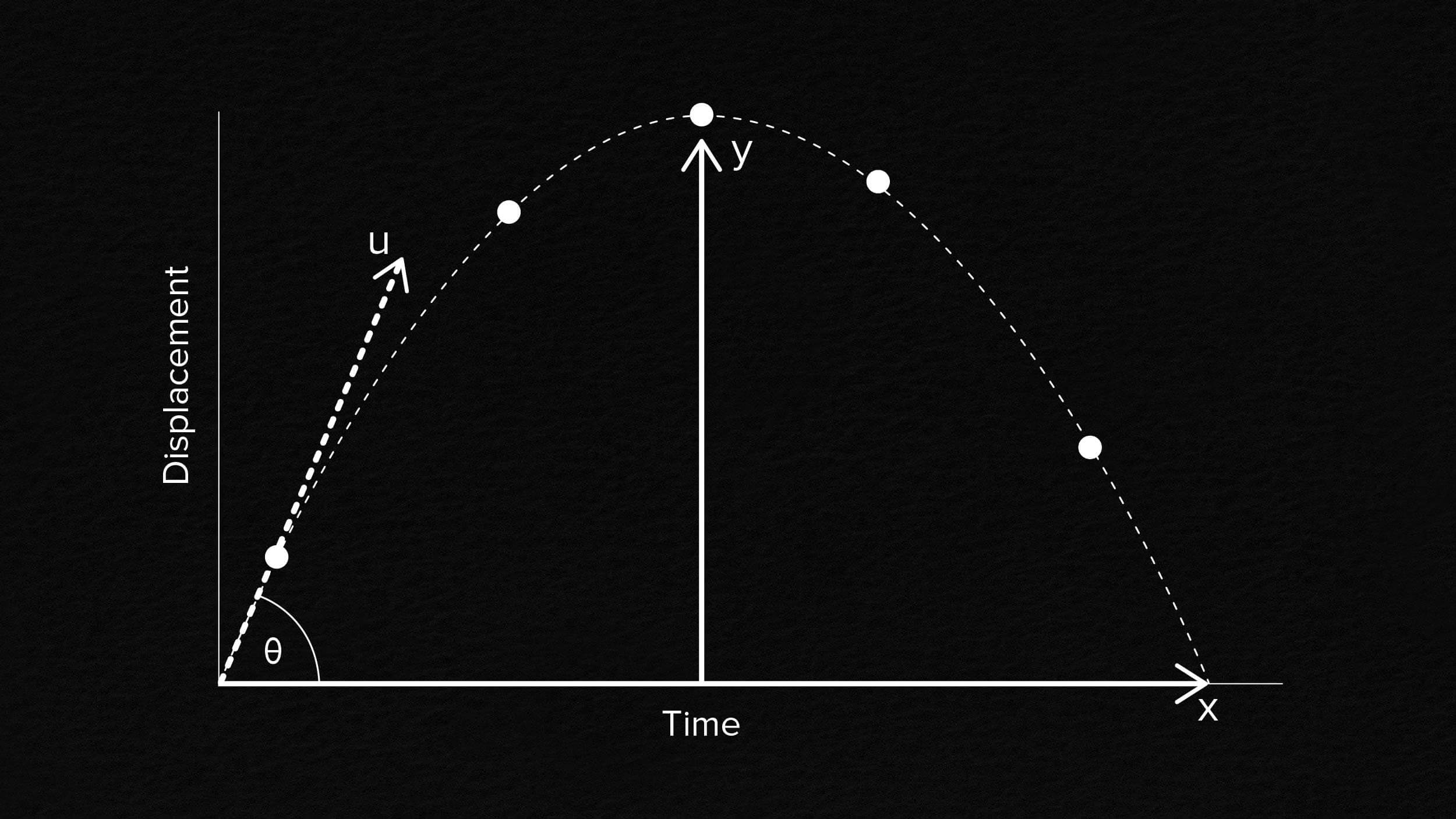Throwback Thursday: The Physics of Happy Gilmore
Can a running start really improve your driving distance in golf?
“What a shot by Happy Gilmore! <aside> Who the hell is Happy Gilmore?”
–Announcer, from Happy Gilmore
As I prepare to write this, it occurs to me that some of you may not have seen the greatest* movie of all time, Happy Gilmore. Happy is a wannabe hockey player with an amazingly powerful slap shot, minus any sort of accuracy or other hockey skills. All of this isn’t quite enough to land him with a minor league hockey team, but — combined with an unorthodox running start — is enough to make him the longest-driving golfer in the world.
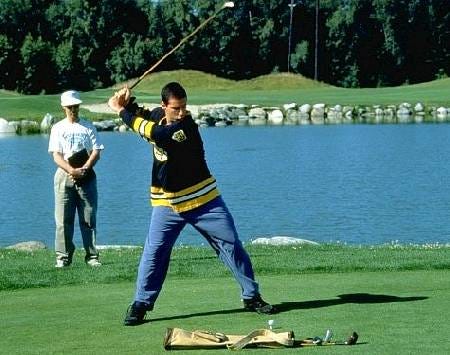
Now, I was intrigued by this, because not only is such a swing actually legal in professional golf (although not so much if you’re drunk in Nova Scotia), but according to the laws of physics, it should actually make the ball go significantly farther! This was experimentally (sort of) proven just a few months ago, virally, by Bryce Harper of the Washington Nationals.
https://instagram.com/p/yz_NXYAIYP/
Harper, not a professional golfer, crushed this drive 340 yards, which is an amazing distance.
How does the “Happy Gilmore” swing enable this? Let me explain, and let’s start with the physics of a normal golf swing.
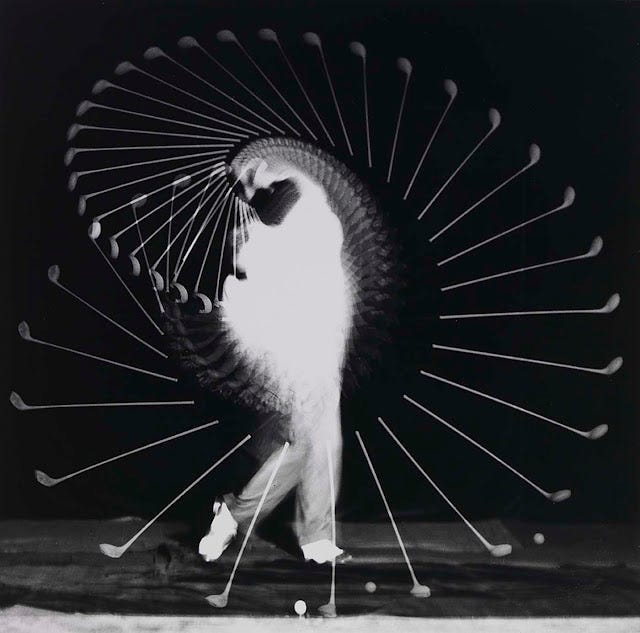
When you collide an object like a swung golf club with a stationary golf ball, there are really only three things that are going to impact how fast the ball comes off of the club head.
One, of course, is the speed of the club head relative to the ball. A golfer that can get the club head traveling at 100 miles-per-hour upon impact with the ball is going to have a distinct advantage over one that can only get it up to 95 miles-per-hour. When you’re trying to hit something as far as you can, faster is better.

The second is also unsurprising: it’s hitting the ball in the “sweet spot” of the club head. The reason for this is pretty straightforward: you want to transfer as much energy (in this case, kinetic energy) from the club to the ball as possible.
If you strike the ball away from the “sweet spot” (or more technically, the center of percussion) of the club head, you’re going to create oscillatory vibrations in the club, which you’ll be able to feel in your hands. (If you’ve ever felt pain in your hands after swinging a baseball bat and making lousy contact, this is the same effect.) Those vibrations are a form of energy, and in particular, energy that’s being transferred up the shaft of the club instead of into the ball. Overall, that’s going to hurt your ball’s distance.
So swing the club head as fast as possible, aim for the sweet spot where you make contact with the ball, and — one last thing — use the heaviest club head possible.
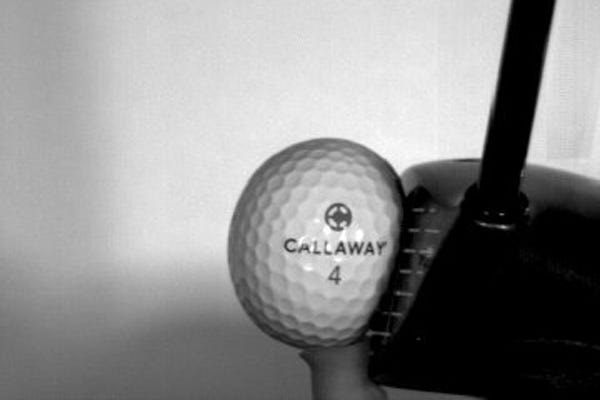
There’s usually a trade-off between the speed of the club head and the mass of a club head; there’s a limit to how fast we can swing a heavy weight positioned at the end of a long rod. But the heavier and faster we can go, the more we’re going to deform the golf ball, the greater the impulse (or force exerted during a certain amount of time) on the ball, and the faster the ball’s going to leave the club head. In terms of physics, this impulse is what’s going to change the ball’s momentum.
For example…
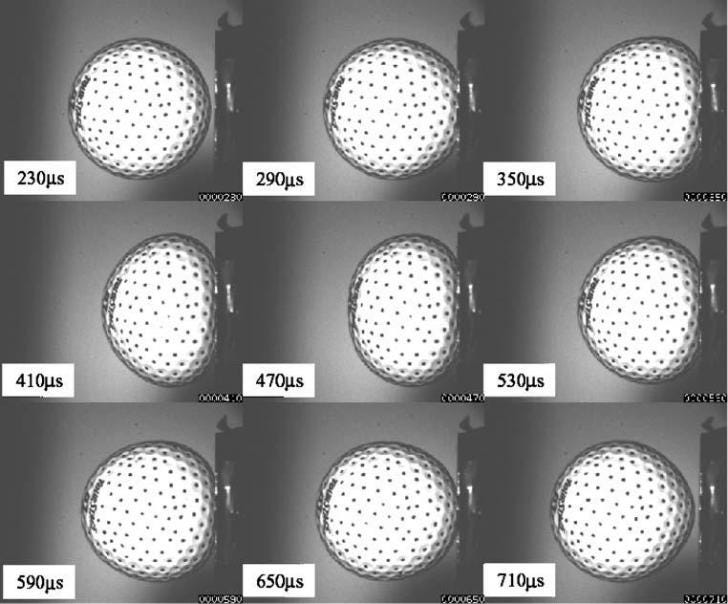
Here’s a collision (above) between a 45-gram golf ball and a 200-gram club head moving at 136 miles-per-hour relative to one another. That’s some intense deformation of the golf ball!
Even though it’s not as bad for lighter clubs (like irons) or slower moving strokes (like putting), the golf ball always deforms some. This is how momentum is transferred, and how it winds up moving after starting off at rest.
https://www.youtube.com/watch?v=6dG9hb3_blo
Although the material that the club is made out of determines how elastic (or bouncy) the collision is — bouncier (elastic) is better, stickier (inelastic) is worse — it’s actually the club head’s mass that determines how fast the ball goes.
You see, the heavier (i.e., more massive) the club head is, the faster the ball’s going to move when it comes off! Think about what happens if you run a tiny mass into a large one: a ping-pong ball into a bowling ball. Even at an incredible speed, the bowling ball hardly changes its motion at all. If you run two billiard balls into one another, the struck ball (that was at rest) can get up to and equal amount of speed that the ball that hit it possessed initially. But if you have a very heavy mass striking a much lighter one, that lighter mass can leave with up to double the initial speed of the mass that struck it!
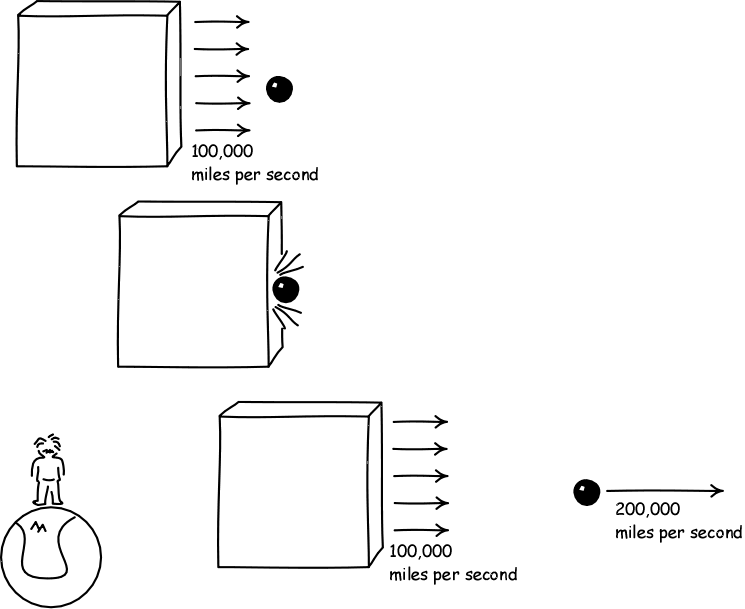
A 1-wood (driver) club head is only about four times the mass of the ball, which is significantly but not infinitely heavier. Although both ball and club technology have improved, they’re still not (and never will be) perfectly elastic. If you can swing a club head at 100 miles-per-hour, you can get the golf ball moving, realistically, at about 150 miles-per-hour. (If the collision were ideally elastic, you’d be able to get up to about 180 miles-per-hour.) That’s pretty good!
But all of that was for a regular golf swing. What about the Happy Gilmore/running-start swing? According to physics, if you can use a running start to get an extra few miles-per-hour (let’s say 5 miles-per-hour) onto your club head speed, that should translate to an extra 8 miles-per-hour for the initial speed of your ball. What does that mean for distance?
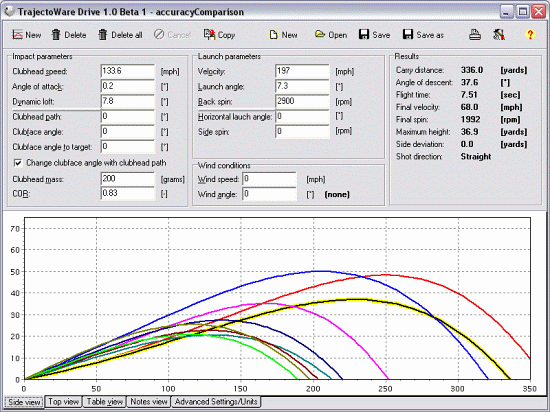
You need to take into account air resistance, trajectory, and a whole host of other things. Thankfully, these things are well-understood, so let’s get right to the results! According to realistic physics, we’re talking maybe an extra 10% longer off the tee, which isn’t too shabby!
When I first realized this, I figured that — based on how hard it is to actually hit a golf ball decently at all — taking a running start was simply too hard to get any sort of accuracy.
You’d most likely miss the sweet spot or the ball entirely, and perhaps even hurt yourself. So this was out of the question, or at least, I thought so. But then it was pointed out to me that some golfers can, in fact, do some amazing things with a golf ball.
So maybe this was reasonable after all! After all, if it isn’t against the rules, and it could add an extra 10% to your drive, who wouldn’t want to be an extra 30 yards closer to the hole?
According to simple physics, it should be true that a running start plus a perfect swing should get you closer to the hole than simply a stationary swing.
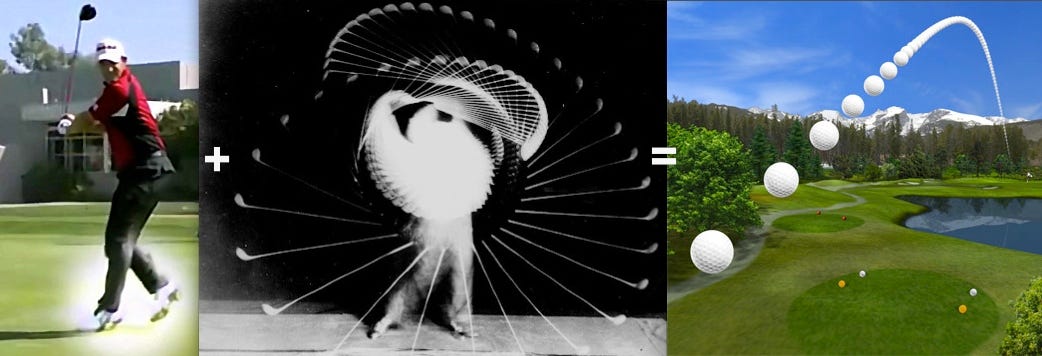
So what happens when you take one of the top players in the world and have them drive the ball using the Happy Gilmore-style swing? Can they still hit the sweet spot of the ball?
See for yourself, courtesy of Sport Science.
(Skip to 3:13 to watch the action if you’re impatient.)
The answer is yes! Not only does physics back up that this is feasible, but actual put-it-into-practice of Padraig Harrington shows that it can work in real life!
It really is a thing of beauty, and it’s always amazing when the theory agrees so well with the experimental results! I don’t golf, but if I did, there’s no way I wouldn’t try for the Happy Gilmore advantage. I would love to see someone give it a shot under tournament conditions, because it really does make a difference. Just make sure you get plenty of practice and wear cleats, because no one wants to wind up looking like this guy!
Leave your comments at the Starts With A Bang forum on Scienceblogs!
* — I was 17 years old when Happy Gilmore was released, and I continue to love this movie to this very day. It is by no stretch of the imagination a fine film, but it strikes that rare, golden balance between absurdity, immature humor, and heart. If you’ve had the good fortune to spend lots of time with me during my late teens or 20s, you were probably forced to watch it with me at some point. My insincerest apologies to you if that was the case, because that movie is awesome, you jackass!


